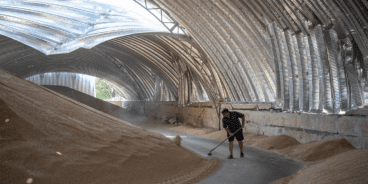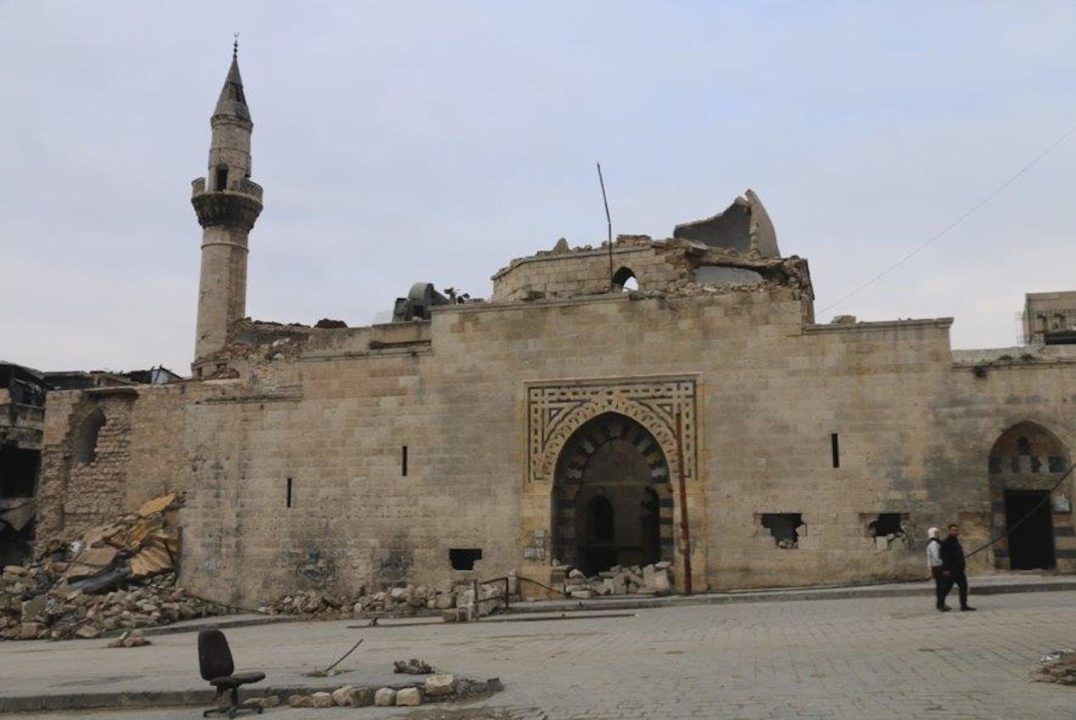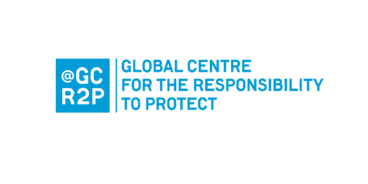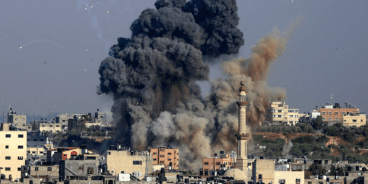

Mass Atrocities, the Responsibility to Protect and Cultural Heritage
Remarks delivered by Dr. Simon Adams, Executive Director of the Global Centre for the Responsibility to Protect, at the “Cultural Heritage Under Siege” event on 9 May 2019 at the J. Paul Getty Museum in Los Angeles, California, United States
Thanks to Jim Cuno, Tom Weiss and the J. Paul Getty Museum for bringing together this remarkable collection of people who are so actively engaged in the protection of cultural heritage.
The fundamental challenge of our times is this: there are currently 68.5 million people displaced by conflict, atrocities and persecution, the greatest number since the Second World War. Confronting that crisis is an international system that is worn-out and fraying at the edges. We have a twentieth-century UN trying to cope with twenty-first century problems. Or to paraphrase one ex-UN official, we have a Remington typewriter UN trying to operate in an iPhone world.
There has been a general decline in inter-state conflict since the end of the Cold War, but the number of high-intensity conflicts within states has significantly increased since 2007. Over the past few years we have seen the rise of non-state armed groups, such as the so-called Islamic State and Boko Haram, who are also fueling mass atrocity crimes in conflicts around the globe. Meanwhile, the UN Security Council is bitterly divided and is struggling to cope in a climate of non-compliance with its resolutions, and almost routine violation of the foundations of international law.
This is important because the norms that protect our fundamental human rights and bind our international community together do not live and die in isolation. They are interlocking and mutually reinforcing.
THE BIRTH OF AN IDEA – R2P
But let’s rewind a bit. The idea of the “Responsibility to Protect” (or R2P) was unanimously adopted at the UN’s World Summit in 2005, the largest single gathering of heads of state and government in human history. And at its heart R2P’s core idea is that all governments have an obligation to protect their citizens from the four mass atrocity crimes – genocide, war crimes, ethnic cleansing and crimes against humanity.
The responsibility to protect people from these crimes falls, first and foremost, upon their sovereign government (Pillar 1). Secondly, the international community has an obligation to assist any state that is struggling to uphold its protective responsibilities (Pillar 2). And finally, if a government proves manifestly unable or unwilling to exercise its responsibility to protect, the world community is obligated to act. This includes, as a last resort, the possible use of military force, under Chapter VII of the UN Charter (Pillar 3).
In the words of Ramesh Thakur, the underlying premise of the Responsibility to Protect is therefore a fundamental rejection of both “unilateral interference and institutionalized indifference.” And in this sense, R2P is a demand-driven norm. As long as mass atrocities exist in the world, the UN Security Council will have to figure out how to respond. And despite progress that is always going to be a delicate, imperfect and contentious enterprise. This is because although R2P is a preventive doctrine, it is also inherently disruptive. It is an ongoing attempt to shift the equilibrium between human rights and sovereignty.
So, fourteen years after it was adopted at the UN World Summit, what does the balance sheet say regarding R2P? On one level we have made extraordinary progress. Institutionally, more than a quarter of UN member states have appointed a national R2P Focal Point and joined the Global Network of R2P Focal Points – the largest governmental network dedicated to preventing mass atrocities with the focus being on what can be done domestically and regionally to implement policies to further this objective.
Meanwhile the UN Security Council has adopted more than 80 resolutions referencing R2P. It is also worth keeping in mind that because of these resolutions, R2P and the Protection of Civilians features in the mandates of 8 out of 14 current UN peacekeeping operations. These involve 95% of the 100,000 peacekeepers currently on active duty. The Human Rights Council has similarly invoked R2P in more than 42 resolutions and the findings of several of its commissions of inquiry. This reflects that R2P is not just an idea, but a practical guide to early warning and, hopefully, timely action. R2P has made a difference in the Democratic Republic of the Congo, in Central African Republic and Mali, in South Sudan, and other situations. Those are some of the positives.
But the record of R2P, like all living international norms, is not unblemished. To the extent that there is any divisiveness around R2P today it is rooted in differing perspectives on what to do when prevention fails and it becomes necessary to act to halt atrocities. But the greatest challenge facing R2P is not Libya, Yemen, Myanmar or Syria, or any single country situation. It is that the entire fabric of human rights and of the international system is currently under attack. So how does cultural heritage fit into all of this?
CULTURAL CLEANSING
Raphael Lemkin, who was personally responsible for the creation of the term “genocide,” was acutely aware of the relationship between culture and atrocities. As a Polish Jew, Lemkin understood how the Nazis had demolished the cultural underpinnings of Jewish life in occupied Eastern Europe. Lemkin’s conception of genocide included the “desecration and destruction of cultural symbols, destruction of cultural leadership, destruction of cultural centers, prohibition of cultural activities.” Regrettably, opposition from some UN member states saw Lemkin’s ideas regarding the connection between culture and genocide diluted in the final version of the Genocide Convention that was adopted in 1948.
At the Global Centre for the Responsibility to Protect we started having to take this whole issue a lot more seriously after the rise of the so-called Islamic State (or ISIL) in 2014. In all lands occupied by ISIL between 2014 and 2017 the armed group systematically set about the destruction of what it considered to be deviant aspects of Iraq and Syria’s cultural heritage. In the Mosul Museum ISIL notoriously used sledgehammers to deface, topple and destroy ancient statues from pre-Islamic Mesopotamia. At Nimrud, ISIL militants blew up and then bulldozed the ruins of an ancient Assyrian city. At Palmyra in Syria ISIL partly destroyed a Roman theater that was listed as a UN World Heritage Site and beheaded Khaled al-Assad, the archaeologist who had spent his career protecting the ruins. They burned books from Mosul’s historic library and engaged in the illegal trafficking of Roman and Assyrian antiquities for profit.
While these acts may seem to pale in comparison to some of ISIL’s other atrocities, it is important to realize that ISIL’s policy represented a systematic attempt to scrub away the identity, history and memory of entire peoples. Far from hiding these acts of armed vandalism, ISIL celebrated them.
When the head of the UN Educational, Scientific and Cultural Organization (UNESCO), Irina Bokova, described ISIL’s vandalism as a policy of “cultural cleansing” that constituted possible war crimes, ISIL could scarcely contain its outrage. But cultural heritage is protected under the 1954 Hague “Convention for the Protection of Cultural Property in the Event of Armed Conflict” and is also considered part of customary international law by the International Committee of the Red Cross. War crimes, according to Article 8 of the Rome Statute of the International Criminal Court (ICC), include “intentionally directing attacks against buildings dedicated to religion, education, art, science or charitable purposes, historic monuments, hospitals and places where the sick and wounded are collected.”
In September 2016 Ahmad al-Faqi al-Mahdi, a member of an armed extremist group from northern Mali, was found guilty at the ICC of a war crime for his role in the deliberate destruction of the UNESCO World Heritage Site of Timbuktu. Partly in response, the UN Security Council adopted Resolution 2347 during March 2017, deploring the destruction of humanity’s shared cultural heritage and noting the ICC verdict.
A few months later the Global Centre for the Responsibility to Protect co-hosted an event with the governments of France and Italy on the margins of the UN General Assembly regarding how to protect cultural heritage from terrorism and mass atrocities. The speakers included myself, along with the Foreign Minister of Italy, Angelino Alfano, the High Representative of the European Union, Federica Mogherini, the Head of UNESCO, Irina Bokova, and the Prosecutor of the ICC, Fatou Bensouda, among others.
All the speakers emphasized that defending cultural heritage was not just about preserving stone statues, but about protecting people. Particular attention was drawn to the ongoing threat posed by ISIL in Syria and Iraq. Many people emphasized that there was a disturbing convergence between ISIL’s acts of cultural vandalism and its desire to exterminate entire peoples. Or as Bokova of UNESCO repeatedly argued, in “today’s new conflicts, those two dimensions cannot be separated.” As a result: “there is no need to choose between saving lives and preserving cultural heritage: the two are inseparable.”
We have seen similar dynamics in Myanmar with the Rohingya, and in other places in the world where atrocities are occurring today. So the meeting was, for us, the beginning of an ongoing battle of ideas around this. That’s why we have worked to include protecting cultural heritage in mandates of UN peacekeeping missions (and in our trainings of UN peacekeepers), why we are discussing with UNESCO some possible joint activities, and why on every atrocity situation we try to analyze the cultural aspect and act accordingly.
One final example if I may. We recently released a policy brief on the persecution of Uighur Muslims in Xinjiang Province in China. There has been quite a bit of media coverage lately about the fact that about 1 million Uighurs are currently in re-education camps. But a lesser known fact is that the Chinese government closed many historic Uighur mosques years ago. It has now started demolishing and systematically bulldozing them. Of 91 major Uighur historical and cultural sites – 33 have been destroyed since 2016, including Yutian Aitika mosque near Hotan. This mosque dated back to the year 1200 and was destroyed in March 2019.
The responsibility to protect is about understanding the connection between vulnerable people and the cultures that sustain them, and defending both. Because when we talk about protecting cultural heritage, we are talking about defending the essence of what makes us human.
Thank you.
Related Publications


Global Centre for the Responsibility to Protect Submission to the Committee on Economic, Social and Cultural Rights on China
